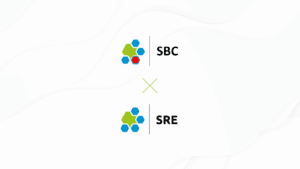What to know about the different types of telecoms fraud
Telecoms fraud is a major global problem, a crime that has service providers paying €29 billion a year. The internet has allowed fraudsters to commit telecoms fraud in more ways than ever before.
When phone hacking occurs, it increases the targeted company’s phone bill. If your business doesn’t have a high-quality security system or keep track of outgoing phone calls, you could be facing telecoms fraud without even knowing it.
There are many different types of ways fraudsters can hack your calls. Keep on reading to find out what they are and how your business can implement fraud prevention.
1. Wangiri fraud
Have you ever received a phone call that doesn’t last more than one ring? You might find that these calls usually come from an international number.
This type of telecoms fraud called Wangiri—the Japanese term for “one-ring and cut.” Fraudsters use this method to try and bait customers to get them to call the number back. They use an international number because these calls cost more than domestic ones.
2. International revenue share fraud
Also referred to as toll-free fraud, International Revenue Share fraud occurs when an international premium rate number provider works with hackers to increase their revenue. Essentially, a business will purchase an international premium rate number from one of these providers to make calls. The more calls made using these numbers, the more businesses, operators, and end-users will owe the provider.
To make a massive profit, the provider gives the number to hackers. They can make a ton of calls using it, and then they share part of that revenue with the hackers.
3. False answer supervision
It may seem strange that hackers will call inactive numbers to commit telecommunications fraud. If nobody picks up the phone call, then you can’t get charged for it. However, they can increase your company’s phone bill using false answer supervision to make them look like the end-user answered the phone.
4. Call forwarding fraud
Hackers can conduct this type of fraud after breaking into your PBX system, meaning it is a form of VoIP fraud. When they get a hold of your account details, they can forward your calls to high-cost destinations. Every time they call that number from a different device, it will automatically go to the place they’ve set on the forwarding system.
5. Access stimulation fraud
You might have also heard this type of fraud referred to as traffic pumping. It occurs when hackers work with destinations (usually international or high-cost) to increase their traffic. They’ll end up splitting their profit, and a service provider will likely cover the cost.
Prevent telecoms fraud by getting technical support
Any business is susceptible to telecoms fraud. However, when you know about the different types of it, you can do a better job of preventing it from happening to your company.
Another action you can take to prevent this from happening is by investing in a fraud management system. Netaxis offers an ITSP fraud detection system that monitors calls and alerts you of any suspicious behaviour. Contact us to speak with a representative about how we can help build a solution around your company’s needs.





